AMD Radeon R7 260X Versus NVIDIA GeForce GTX 650 Ti Boost Video Card Review
Temperature & Noise Testing
Temperatures are important to enthusiasts and gamers, so we took a bit of time and did some temperature testing on the AMD Radeon R7 260X and the NVIDIA GeForce GTX 650 Ti BOOST.
AMD Radeon R7 260X 2GB Video Card Idle Temperature:
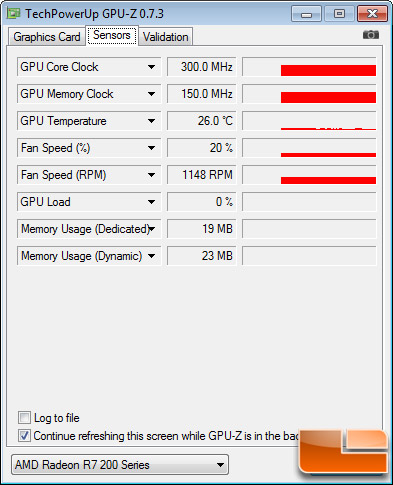
NVIDIA GeForce GTX 650 Ti BOOST 2GB Video Card Idle Temperature:
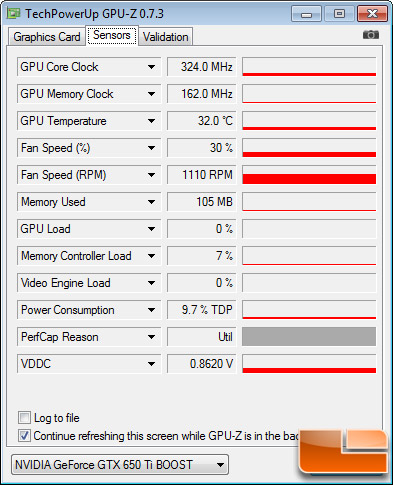
The AMD Radeon R7 260X had an idle temperature of 26.0C in a room that was 22.0C (72F) and the single fan was spinning ~1150 RPM. The NVIDIA GeForce GTX 650 Ti BOOST 2GB was a tad hotter and idled at 32C with a fan speed of ~1100 RPM.
AMD Radeon R7 260X 2GB Gaming Temperature:
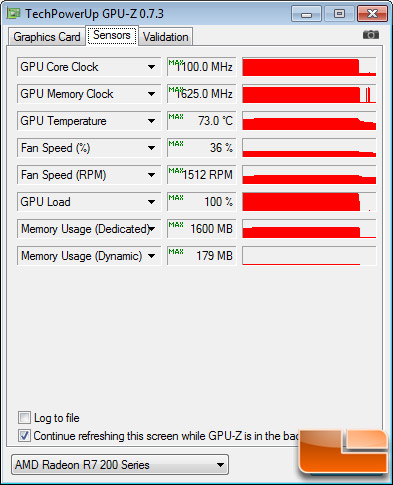
NVIDIA GeForce GTX 650 Ti BOOST 2GB Gaming Temperature:
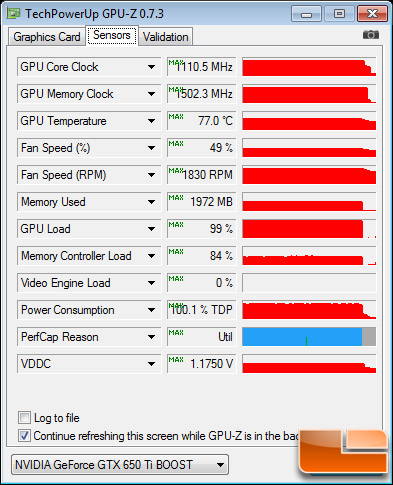
When playing Far Cry 3 and Battlefield 3 for about 30 minutes each, we hit 73C on the AMD Radeon R7 260X and 77C on the NVIDIA GeForce GTX 650 TI BOOST. Notice the fan speed was only 1500 RPM on the AMD Radeon R7 260X versus 1800 RPM on the NVIDIA GeForce GTX 650 TI BOOST 2GB.
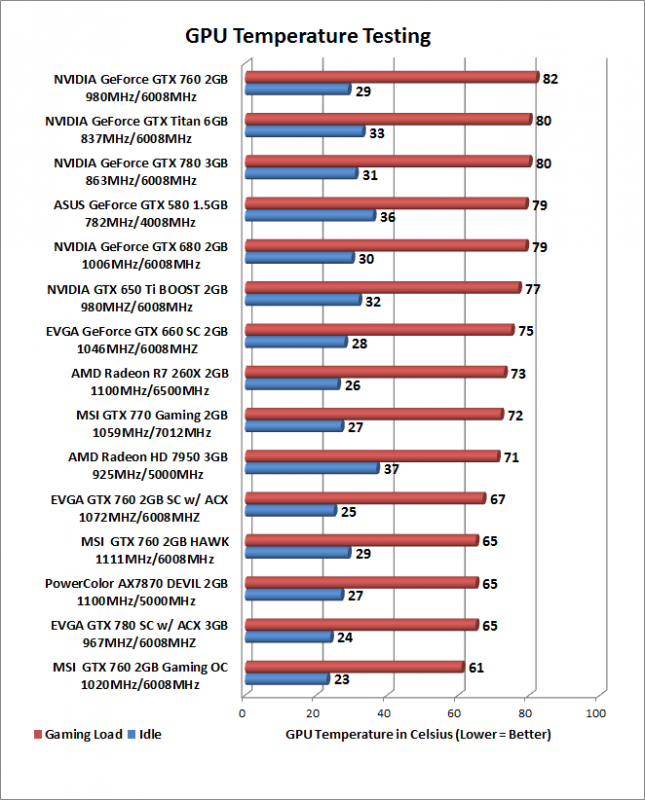
Both cards fall in the middle of the pack when it comes to noise, but keep in mind that these are both reference coolers. The AMD Radeon R7 260X runs cooler at both idle and load when compared to the NVIDIA GeForce GTX 650 Ti Boost 2GB.
Sound Testing
We recently upgraded our sound meter to an Extech sound level meter with 1.5dB accuracy that meets Type 2 standards. This meter ranges from 35dB to 90dB on the low measurement range, which is perfect for us as our test room usually averages around 36dB. We measure the sound level two inches above the corner of the motherboard with ‘A’ frequency weighting. The microphone wind cover is used to make sure no wind is blowing across the microphone, which would seriously throw off the data.
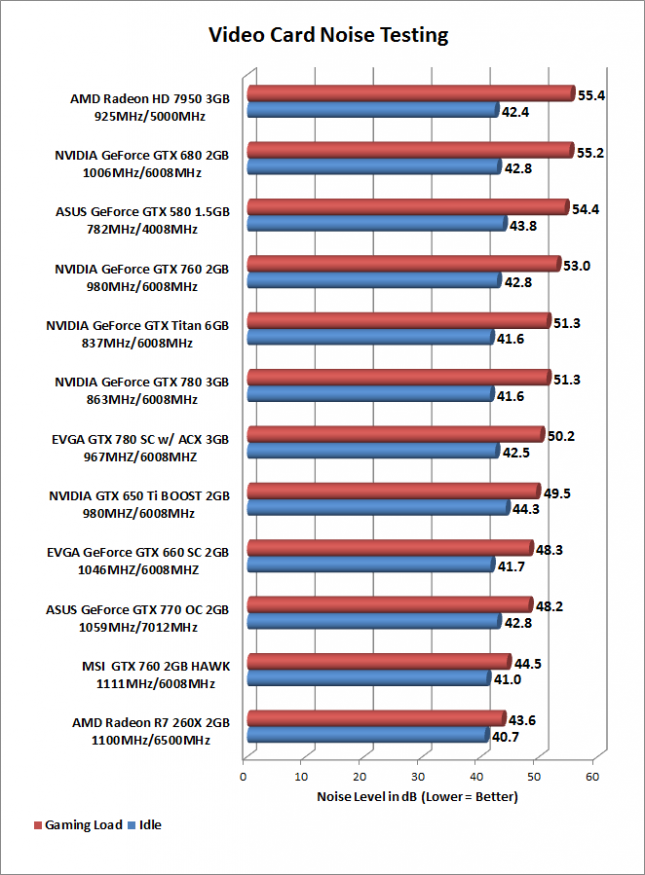
If you read the part about temperatures, you should already know where this is headed. The AMD Radeon R7 260X was quieter at both idle and load!
